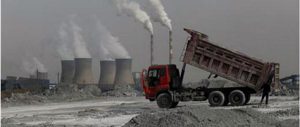Shale gas is a rising star in China. Ever since the government solicited interest in its first auction of drilling rights on May 17, policy on unconventional gas extraction has been under the close gaze of an energy industry anxious to join the “gold rush” already under way in the United States. So far, that policy has been very supportive.
But key questions remain unanswered: what impact will fracking, the controversial technique used to extract gas from shale rock, have on China’s already stressed water resources? Does China have the technical ability to tap these deep underground gas reserves, often located in far-flung and mountainous regions? Who will regulate the business? And how reliant will Chinese firms have to be on more experienced US partners?
Now, as the land ministry prepares to issue its second tender for shale gas blocks (in which more than 70 companies have already registered their interest) getting answers to these questions is more pressing than ever.
Fast growing ambitions
In late 2011, the State Council – China’s highest executive organ – officially recognised shale gas as China’s 172nd “independent mineral resource”, an important milestone. This was followed in spring this year by premier Wen Jiabao’s annual parliamentary report, in which he outlined government intentions to speed up efforts to survey and develop the country’s shale-gas resources.
These moves were likely spurred on by America’s shale-gas revolution, which has already transformed Washington’s energy debate. In 2000, shale gas represented 1% of US natural gas supplies. By the end of 2011, it had hit 30%.
In November 2009, during Barack Obama’s visit to China, the government signed a memorandum of understanding on shale-gas cooperation with the United States. Two years later, the 12th Five Year Plan – China’s overarching strategy for 2011 to the end of 2015 – called for the development of non-conventional oil and gas resources, including shale gas. The document set an initial production goal of 6.5 billion cubic metres for 2015. When energy consumption targets were issued in 2011, shale gas was classed as a special type of resource exempt from these reduction goals, further bolstering the sector.
China’s large state-owned energy firms and big overseas companies have taken the lead. Data from several large Chinese oil firms show that, as of May this year, 63 trial shale gas or shale oil wells had been completed – 61 by oil companies, and two by China’s Ministry of Land and Resources. Thirty of these wells have been able to generate industrial-quality gas.
State-owned energy giant China National Petroleum Corporation (CNPC) has made the fastest progress, obtaining rights to drill four shale-gas “blocks” with good prospects in southern Sichuan and northern Yunnan, and achieving commercial-quality flows at four wells. CNPC is joining forces with Shell, which in March announced it had signed China’s first shale-gas production partnership. The two companies plan to jointly survey, develop and produce shale gas resources.
Meanwhile, Sinopec has drilled five prospecting wells in Guizhou province and Sichuan, both in western China, and in Anhui province in the east. Another mega state-owned firm, China National Offshore Oil Corporation, is still in the early surveying stages.
The country’s big power companies, including Huaneng, Huadian and Honghua, are also getting involved. Between them, these three have signed shale-gas development agreements with local governments in Chongqing city, as well as Hunan and Sichuan provinces.
The US State Department’s special envoy and coordinator for international energy affairs Carlos Pascual has been quoted as saying that American oil giants such as Exxon-Mobil and Chevron may benefit by partnering with Chinese firms to develop shale-gas resources.
Private companies welcome
When it launched its first auction of shale-gas drilling rights on May 17, the Ministry of Land and Resources specified that any Chinese oil and gas mining company with registered capital of 300 million yuan (US$47 million) or more could bid for the right to prospect for shale gas. This opened the sector’s door to private companies as well as state-owned players.
Private firms including Xinjiang Guanghui, MI Energy and Honghua have reportedly been making preparations to enter the shale-gas market for a long time.
The State Council’s official recognition of shale gas as a mineral resource last year meant that its development would no longer be subject to the constraints of the oil and gas sector and any company with the financial and technical means would be allowed bid for drilling rights. Although the big state-owned firms and overseas energy giants have rushed to grab the prime sites, there is a route into shale for private capital.
Looming concerns
Initial estimates from China’s land ministry put the country’s extractable shale-gas reserves above 25 trillion cubic metres (excluding Qinghai and Tibet). That’s a similar figure to China’s onshore conventional gas reserves, and also to the 24 trillion cubic metres of shale gas the United States claims to possess. The US has an even more optimistic view of China’s resources: in an initial assessment of shale-gas reserves in 14 regions around the world, published in April 2011, energy officials said China could have as much as 100 trillion cubic metres of the fuel, 36 trillion of which are recoverable.
Despite the impressive figures and the enthusiasm from industry and government, serious concerns loom in the background. China has rich shale gas reserves and boundless confidence. But it also has limited technological capabilities, production bottlenecks and an undeveloped market.
And, while there are high hopes that shale gas could provide China with a less carbon-intensive energy supply than coal, there is also growing awareness of the damage extracting it could inflict on the country’s aquifers. In the United States, where shale-gas extraction is much more mature, environmentalists are waging war against the industry (see our Q&A with campaigner Bill McKibben).
Fracking, which involves pumping millions of litres of “slick water” – a mixture of water, sand and chemicals – down a well at high pressure is poisoning precious water supplies, critics say. China is certain to be dogged by similar problems, say many observers. Zhang Yongwei, a researcher at the State Council’s Development Research Centre, has said that without an environmental protection framework in place, large-scale development of shale gas in China could be disastrous.
Within China, the biggest worry appears to be over a possible technology lag. The conventional view is that the technology and equipment used to develop shale gas is similar to that for natural gas, and that no great leap is needed. Horizontal drilling and hydraulic fracturing are already applied in China’s natural gas fields, while China is already able to make drilling rigs, fracturing systems and well-bottom equipment.
But concerns persist. In the late 1990s, breakthroughs in horizontal drilling and multi-stage hydraulic fracturing techniques in the United States kick-started the “shale gas revolution”. But in China, where the shale gas lies much deeper underground and in tougher terrain than the US, no companies have yet mastered multi-stage hydraulic fracturing. Some say this means China will have to work with American firms. Others worry it will be hard to adapt imported technology and expertise to Chinese geology.
“Many American shale-gas companies are anxiously waiting for the market to open up in China – they’ve got the technology and hope to work with Chinese firms to get a slice of the market. That’s both good and bad. It will all depend on how policy is finally set, and how supervision works,” one industry insider told Chinese website stdaily.com.
Even if all technical worries are alleviated, regulating the sector could still prove a headache. To date, there is no clear legislation on the extraction of shale gas, and there is still dispute over systems for managing shale gas drilling rights and block registration as well as who takes responsibility for environmental oversight.
Financial and taxation policies have not yet been set for this sector either – in a context where big injections of cash will be needed. If production of shale gas is to reach somewhere between 60 billion and 100 billion cubic metres a year by 2020, between 400 and 600 billion yuan (US$63-94 billion) will need to be invested in the next decade.
Meanwhile, China’s existing mechanism for setting natural gas prices (they are currently capped, though reforms are being piloted in southern Guangdong province) could affect the commercial viability of shale gas.
Xu Nan is managing editor in chinadialogue’s Beijing office. Wang Haotong is a journalist based in Beijing.
This article is published as part of our Green Growth project, a collaboration between chinadialogue and The Energy Foundation.
Homepage image by SRWA





